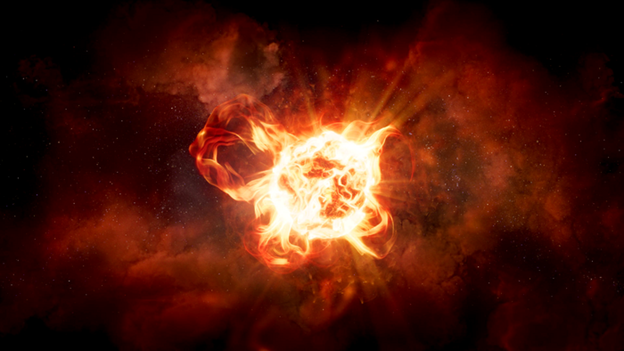
Watching a Rare Giant Star Die
A team of astronomers from the University of Arizona created a detailed, 3-D image of a dying hypergiant star. They traced the distribution, directions, and velocities of various molecules surrounding a red hypergiant star known as VY Canis Majoris.
Their findings, presented on June 13 at the 240th Meeting of the American Astronomical Society in Pasadena, California, provide insights into the processes of the death of giant stars.
Extreme supergiant stars known as hypergiants are rare, and only a few exist in the Milky Way. Unlike stars with lower masses, hypergiants experience substantial, sporadic mass loss events that form complex, highly irregular structures composed of arcs, clumps, and knots.
Approximately 3,009 light-years from Earth, VY Canis Majoris – or VY CMa, for short – is a pulsating variable star in the slightly southern constellation of Canis Major. From 10,000 to 15,000 astronomical units (with 1 AU being the average distance between Earth and the sun), VY CMa is possibly the most massive star in the Milky Way. The team chose to study VY CMa because it is one of the best examples of these types of stars.
The team used the Atacama Large Millimeter Array, or ALMA, in Chile to trace a variety of molecules in material ejected from the stellar surface. While some observations are still in progress, they obtained preliminary maps of sulfur oxide, sulfur dioxide, silicon oxide, phosphorous oxide, and sodium chloride. From these data, they constructed an image of the global molecular outflow structure of VY CMa on scales encompassing all ejected material from the star.
By moving ALMA’s 48 radio dishes into different configurations, the researchers were able to obtain information about the directions and velocities of the molecules and map them across the different regions of the hypergiant’s envelope in considerable detail, correlating them to various mass ejection events over time.
